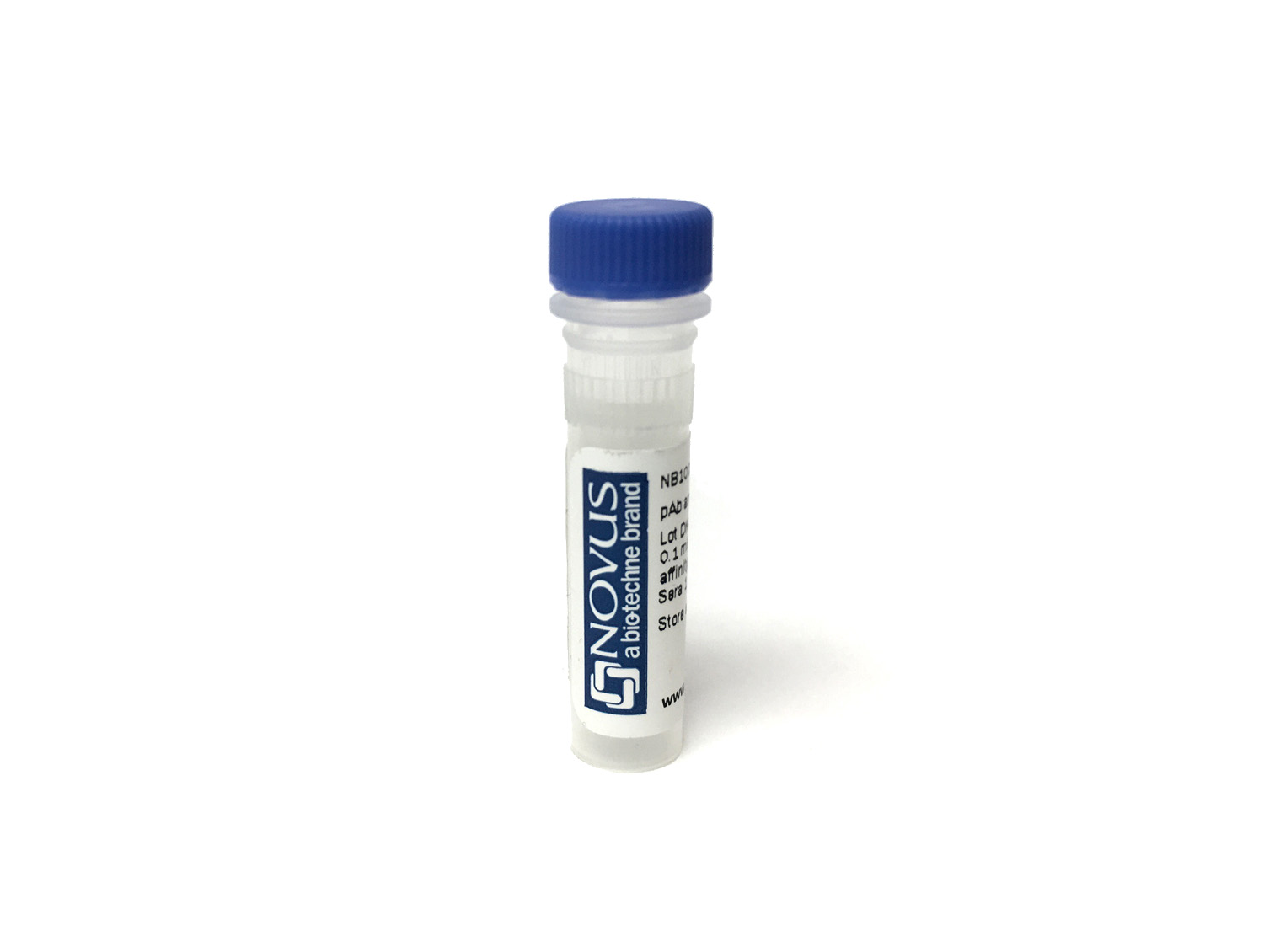Ubiquitin/Ubiquitin+1 Antibody (83406) [DyLight 650]
Novus Biologicals, part of Bio-Techne | Catalog # FAB701W


Key Product Details
Species Reactivity
Applications
Label
Antibody Source
Concentration
Product Specifications
Immunogen
SSMQIFVKTLTGKTITLEVEPSDTIENVKAKIQDKEIPPDQQRLIFAGKQ LEDGRTLSDYNIQKESTLHLVLRLRGYADLREDPDRQDHHPGSGAQ
Specificity
Clonality
Host
Isotype
Applications for Ubiquitin/Ubiquitin+1 Antibody (83406) [DyLight 650]
Immunohistochemistry
Western Blot
Formulation, Preparation, and Storage
Purification
Formulation
Preservative
Concentration
Shipping
Stability & Storage
Background: Ubiquitin/Ubiquitin+1
Ubiquitin is a 76 amino acid (aa) protein that is ubiquitously expressed in all eukaryotic organisms. Ubiquitin is highly conserved with 96% aa sequence identity shared between human and yeast Ubiquitin, and 100% aa sequence identity shared between human and mouse Ubiquitin. In mammals, four Ubiquitin genes encode for two Ubiquitin-ribosomal fusion proteins and two poly-Ubiquitin proteins. Cleavage of the Ubiquitin precursors by deubiquitinating enzymes gives rise to identical Ubiquitin monomers each with a predicted molecular weight of 8.6 kDa. Conjugation of Ubiquitin to target proteins involves the formation of an isopeptide bond between the C-terminal glycine residue of Ubiquitin and a lysine residue in the target protein. This process of conjugation, referred to as ubiquitination or ubiquitylation, is a multi-step process that requires three enzymes: a Ubiquitin-activating (E1) enzyme, a Ubiquitin-conjugating (E2) enzyme, and a Ubiquitin ligase (E3). Ubiquitination is classically recognized as a mechanism to target proteins for degradation and as a result, Ubiquitin was originally named ATP-dependent Proteolysis Factor 1 (APF-1). In addition to protein degradation, ubiquitination has been shown to mediate a variety of biological processes such as signal transduction, endocytosis, and post-endocytic sorting.
Long Name
Alternate Names
Gene Symbol
Additional Ubiquitin/Ubiquitin+1 Products
Product Documents for Ubiquitin/Ubiquitin+1 Antibody (83406) [DyLight 650]
Product Specific Notices for Ubiquitin/Ubiquitin+1 Antibody (83406) [DyLight 650]
DyLight (R) is a trademark of Thermo Fisher Scientific Inc. and its subsidiaries.
This product is for research use only and is not approved for use in humans or in clinical diagnosis. Primary Antibodies are guaranteed for 1 year from date of receipt.